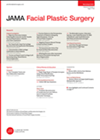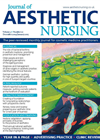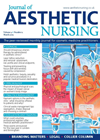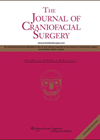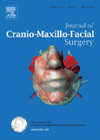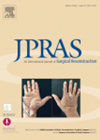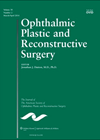
Journal Reviews archive for June 2015
The effect of skin graft contracture when using artificial dermis
This is a report of a prospective clinical trial performed in a single centre in Seoul, South Korea. The group attempted to observe the change in size of skin grafts applied to an artificial dermal substitute (matriderm). Two groups of...
Body dysmorphic disorder in a facial plastic and reconstructive surgery clinic
Body dysmorphic disorder (BDD) is under recognised and under detected among patients undergoing facial plastic and reconstructive surgery. Patients with BDD require psychiatric care not cosmetic surgery. In order to protect patients and surgeons, sound screening for BDD preoperatively should...
Form versus function concerning the external nasal valve
External nasal valve dysfunction is known to be a common cause of nasal obstruction. The authors present a prospective case series (n=19) including primary and revision cases of functional rhinoplasties. All patients reported nasal obstruction and were diagnosed with external...
The role of bacterial biofilms in aesthetic medicine prioritising prevention
The author provides an overview of literature pertaining to the complex and specialist subject of biofilms that may occur in aesthetic medicine. A brief overview is presented concerning the pathophysiology of biofilms with some discussion concerning differential presentations; early and...
Hyaluronidase is not foolproof prevention is key
The author presents a brief account of some key messages to practitioners undertaking non-surgical nose augmentation using calcium hydroxylapatite (Ca HA); reinforcing a robust, current and accurate knowledge of facial anatomy as well as the established safety profile of CaHA....
Intensed pulsed light for skin rejuvenation
A detailed article exploring many aspects of IPL; the mode of action, the role in photorejuvenation, as well as a useful comparison as to how the scope of IPL compares to laser for similar purposes, with analogies as to how...
Reconstruction paediatric lower facial defects with an expanded flap from the submental region
Lower facial and perioral scars from burns or defects following treatment of vascular lesions can lead to serious facial deformity with lip ectropion and asymmetry. Conventional reconstructive methods like skin grafts or free flaps do not always give a satisfactory...
Total lower lip reconstruction
Total or near total defects of the lower lip may result from trauma, cancer ablation or congenital causes. Defects usually involve the full thickness and include skin, muscle and mucosa. There are a number of techniques for the one stage...
Treatment of established facial palsy with botulinum toxin followed by half mirror exercises
Seventeen patients with unilateral facial palsy for more than a year were treated with botulinum toxin injections to relieve symptoms of facial synkinesis or hyperkinetic movements. Three injections were given at six to eight month intervals, followed by daily half...
Reconstructing large heel defects
A description of one method of reconstructing problematic soft tissue defects of the heel. It is always good to have several techniques available in your quiver, so that you can choose the most appropriate arrow for any particular problem. This...
Long-term follow-up of maxillary advancement in cleft palate cases
Twenty-two consecutive patients with cleft lip and palate, treated with maxillary advancements and distraction osteogenesis, were followed up for between five and 13 years. They were divided into two groups, those who were still growing and those whose growth was...
A new technique for correction of medial ectropion with a lax medial canthal tendon
This is a prospective study of a new technique for repair of medial ectropion associated with medial canthal tendon (MCT) laxity. The procedure was performed on 79 eyes and involved excision of an ellipse of tissue from below the punctum...


